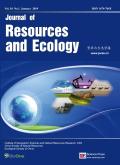Contribution of Urban Trees to Offset Carbon Dioxide Emissions from the Transportation Sector in the Ring Road Area of Kathmandu Valley, Central Himalaya
Q3 Environmental Science
引用次数: 0
Abstract
Abstract: Urban trees are valuable resources for urban areas as they have the capacity to reduce ambient temperatures, mitigate urban heat island effects and reduce runoff of rainwater playing an important role in mitigating the impacts of climate change by reducing atmospheric carbon dioxide (CO2). It also helps to reduce aerial suspended particulate matter, add visual appeal to the urban landscape sequestrating a significant amount of carbon from ambient atmospheric CO2. Carbon storage by urban trees in the ring road area of the Kathmandu Valley was quantified to assess the magnitude and role of urban forests in relation to mitigate the impact of global climate change. A total of 40 sample plots were placed randomly for the detailed carbon assessment. Above-ground and belowground carbon pools were considered in the detailed assessment. Furthermore, quality assurance (QA) and quality control (QC) were maintained through regular monitoring and capacity building of the field crews while collecting the bio-physical data. The assessment recorded a total of 33 different species of plants in the avenue's plantation sites in ring road. The mean seedling, sapling, and tree density was found to be 2149585 and 185 per hectare. The mean carbon stock per hectare in the avenue plantation of the ring road area was 24.03 tC ha–1 and the existing total carbon stock was 7785.72 tC in 2021. Likewise, the total baseline carbon dioxide equivalent (tCO2e) in the avenue plantation was found to be 28573.60 tCO2e. The carbon dioxide emission from the transport sector in the ring road area in a full movement scenario was 312888.00 tCO2e per annum, while the net emissions was 42547 tCO2e. There was a deficit of carbon dioxide in terms of stock by avenue plantations of 14000.8 tCO2e. This study indicates that the existing urban forest plantation is unable to sequestrate or offset the carbon dioxide that is emitted through the transportation sector. Consequently, open spaces like riverbanks and any other public lands, in which urban forests could be developed has to be planned for the green infrastructure and plantation of the multipurpose trees. The distinct values of forests in and around urban areas have to be recognized in the specific policies and plans for the sustainable management of urban and peri-urban forests to meet the adverse impact of global climate change. In addition, this study provides insights for decision-makers to better understand the role of urban forests and make sustainable management plans for urban forests in the cities like in Kathmandu Valley.喜马拉雅中部加德满都谷地环线地区城市树木对抵消交通部门二氧化碳排放的贡献
本文章由计算机程序翻译,如有差异,请以英文原文为准。
求助全文
约1分钟内获得全文
求助全文
来源期刊

Journal of Resources and Ecology
Environmental Science-Ecology
CiteScore
2.40
自引率
0.00%
发文量
107
 求助内容:
求助内容: 应助结果提醒方式:
应助结果提醒方式:


